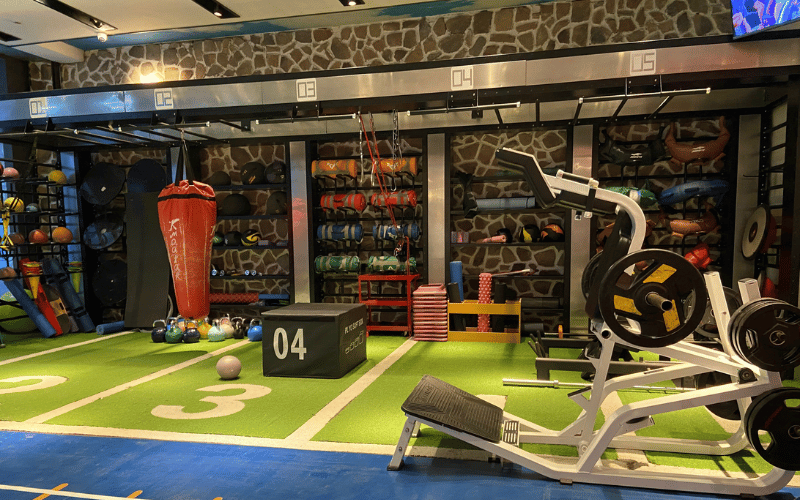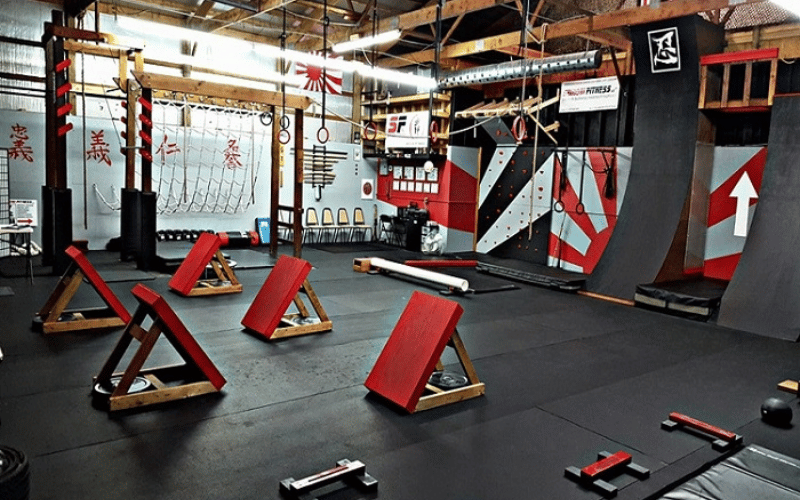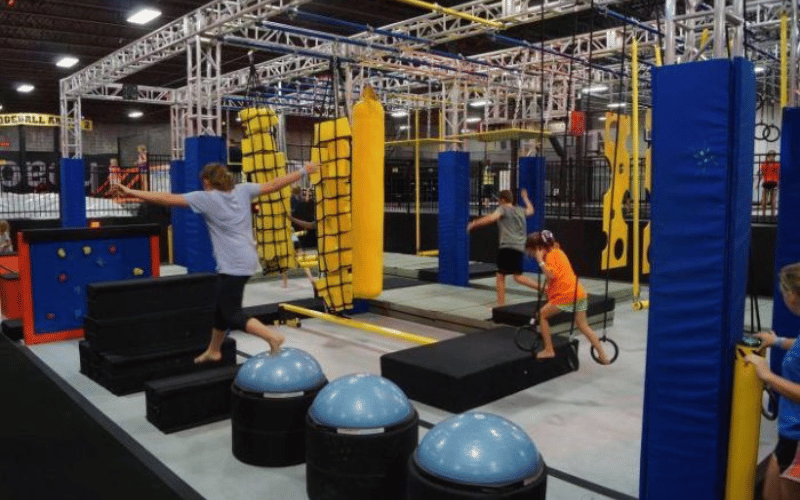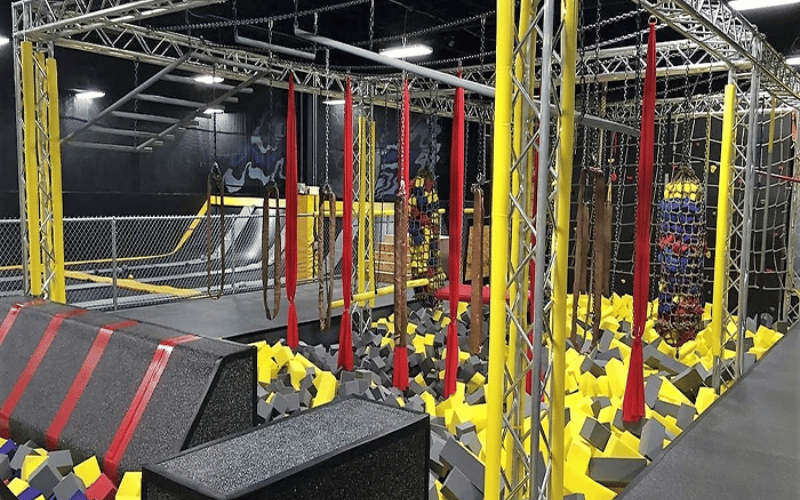Ninja Warrior gyms have surged in popularity, inspired by the adrenaline-pumping obstacles seen on shows like American Ninja Warrior. These facilities aren’t just about fitness—they’re immersive experiences that challenge agility, strength, and mental grit. But behind the thrilling courses lies a complex financial landscape that aspiring gym owners must navigate.
While enthusiasts might dream of swinging on monkey bars or conquering warped walls, the reality of opening a Ninja Warrior gym involves careful budgeting for everything from custom-built obstacles to liability insurance. Let’s dive into the key costs, hidden expenses, and strategic decisions that can make or break your venture.
Table of Contents
ToggleUnderstanding Initial Franchise Costs
For those considering opening a Ninja Warrior gym under an established franchise, initial costs vary depending on the brand and location. Franchise fees typically range from $20,000 to $50,000. These fees grant you access to the franchise’s branding, training materials, and operational systems.
Additional startup costs associated with franchises may include staff training, marketing support, and required purchases such as branded merchandise or uniform equipment. These costs ensure your gym maintains consistent quality and aligns with the franchise’s reputation.
It’s important to carefully review the franchise agreement, as hidden fees or ongoing royalties (often a percentage of gross revenue) can significantly impact your profit margins over time.
Estimating Equipment and Facility Expenses
One of the most substantial costs of opening a Ninja Warrior gym comes from outfitting the facility with state-of-the-art equipment. Obstacles must be safe, durable, and designed to challenge participants of all skill levels. Equipment costs can range from $50,000 for a basic setup in a small location to over $250,000 for a fully immersive, competition-grade layout.
Here are some key components to budget for:
- Obstacle rigs (adjustable for various age groups and difficulty levels)
- Safety mats and crash pads
- Climbing walls, ropes, and monkey bars
- Trampolines and foam pits for advanced training
The size of your facility plays a crucial role in these expenses. Leasing a suitable industrial or commercial space can cost between $5,000 and $15,000 per month, depending on location and square footage. Additionally, renovations to accommodate the unique demands of a Ninja Warrior gym may add $20,000 to $100,000 to your total investment. This includes constructing proper flooring, padded walls, and reinforced infrastructure to support heavy equipment.
Monthly Operating Costs for a Ninja Gym
Once your gym is up and running, monthly operational costs will determine whether you can break even and eventually turn a profit.
Staffing Costs
Operational demands mean you’ll need a team of trained staff, including instructors, trainers, and customer service representatives. Salaries can vary widely, but expect staffing costs to start at around $10,000 per month for a medium-sized gym.
Utilities and Maintenance
High ceilings and large spaces can result in significant heating, cooling, and electricity bills, often totaling $2,000 to $3,000 per month. Equipment maintenance and repair costs should also be factored in, as wear and tear are inevitable. Dedicate around $1,000 to $2,000 per month for these needs.
Marketing and Promotions
To attract new customers, marketing is essential—budget around $3,000 to $5,000 monthly for digital advertising, event sponsorships, and community outreach. Investing in dynamic video content that showcases exciting obstacles and activities can significantly enhance your outreach efforts.
Insurance and Licensing
Given the nature of Ninja Warrior gyms, liability insurance is a must. Premiums can range from $1,000 to $4,000 per month, depending on the size of your facility and the types of activities offered. Additionally, permits and licenses may add a minor recurring charge.
Other Costs
Additional expenses to consider include cleaning services, merchandise restocking, and software or tools for managing bookings and memberships.
Budgeting for these operational expenses not only ensures smooth day-to-day operations but also helps improve customer retention and satisfaction through sustained high-quality experiences.
Opening a Ninja Warrior gym can be a challenging but enriching business opportunity. With accurate financial planning and strategic investments, you can create a vibrant space that encourages fitness, fun, and personal achievement while earning a solid return on your investment.
What Are the Legal Requirements for Opening a Ninja Warrior Gym?
Launching a Ninja Warrior gym is an exciting business opportunity. However, ensuring you meet all legal requirements is critical for a smooth and compliant operation. From securing permits to adhering to strict safety standards, there are several key areas gym owners must address before opening their doors. Here’s what you need to know to meet the necessary legal obligations and establish your business with confidence.
Obtaining Proper Permits and Licenses
To legally operate your Ninja Warrior gym, you’ll need to secure a variety of permits and licenses. These ensure compliance with local, state, and federal laws.
Business License
A general business license is required to operate in any city or county legally. This license allows your gym to function as a recognized, taxable entity. Check with your local government to determine the specific application process and expected fees.
Zoning and Building Permits
Zoning laws dictate where businesses can operate within a given area. Ensure your location is zoned for recreational or fitness facilities before signing any leases or purchasing property. Additionally, renovations or construction may require building permits. This includes structural changes, such as installing reinforced obstacle courses, crash mats, or climbing walls.
Certificate of Occupancy
Once your facility is ready, you’ll need a certificate of occupancy to verify that your business complies with building codes, zoning laws, and safety standards. This certificate indicates that your gym is safe for public use and is typically issued following an inspection by local authorities.
Additional Active Licenses
If your gym plans to sell snacks, drinks, or merchandise, you may need specific licenses, such as food service permits or sales tax permits. These vary depending on location and the extent of your product offerings.
Insurance Needs for Gym Owners
Running a fitness facility comes with inherent risks, making insurance a top priority for owners of Ninja Warrior gyms. The right coverage provides financial protection and peace of mind.
General Liability Insurance
General liability insurance is essential for covering claims related to injuries, property damage, or accidents at your gym. Given the physical nature of Ninja Warrior training, this is an indispensable safeguard against costly litigation.
Property Insurance
Property insurance covers damage to your gym’s physical assets, including equipment, furniture, and the building itself. Risks such as fire, theft, or vandalism are typically covered under these policies, ensuring your business can recover quickly in the event of unexpected damage.
Workers’ Compensation Insurance
If you plan to hire staff, most states require workers’ compensation insurance. This covers medical expenses and lost wages for employees injured on the job. It demonstrates your commitment to workplace safety and is critical for legal compliance.
Professional Liability Insurance
For gyms offering personal training sessions or specialty classes, professional liability insurance (or errors and omissions insurance) is a must. It covers claims arising from coaching mistakes or alleged negligence during instruction of members.
Event-Specific Coverage
If your gym hosts large Ninja Warrior competitions or events, consider short-term event insurance to mitigate additional risks associated with higher foot traffic and more intensive activities.
What Are Some Popular Revenue Streams for Ninja Gyms?
Running a Ninja gym can be an exciting and profitable endeavor, especially with a diverse range of revenue streams. From hosting memorable events to offering tailored fitness programs, Ninja gyms attract a wide variety of clients, catering to individuals and groups of all ages. By exploring and optimizing these revenue opportunities, gym owners can create a sustainable business model that thrives in the competitive fitness and recreation industry.
Offering Birthday Parties and Events
Birthday parties and private events are among the most lucrative and sought-after revenue streams for Ninja gyms. These facilities provide a unique and energetic experience for kids and adults alike, making them an attractive venue for special occasions.
Birthday Packages
Ninja gyms are particularly popular for birthday parties, where kids can enjoy age-appropriate obstacle courses, team challenges, and fun-filled activities. Packages typically include:
- Exclusive use of the facility or a dedicated event area for a set duration.
- Access to trained staff who guide participants through the courses and ensure safety.
- Party add-ons, such as catering, decorations, and themed experiences.
Structured packages can appeal to parents looking for convenient and hassle-free options. Tiered pricing levels, ranging from basic setups to deluxe experiences, ensure there’s something for every budget.
Corporate Team-Building Events
Ninja gyms also serve as excellent venues for corporate team-building activities. These events often involve obstacle course challenges designed to promote teamwork, problem-solving, and communication skills. Companies are willing to invest in unique, engaging experiences for employee bonding, making this a valuable revenue stream.
Seasonal and Community Events
Seasonal events, such as Halloween obstacle challenges, summer family days, or back-to-school Ninja tournaments, can draw in both new and returning customers. Hosting open competitions or collaborating with local schools and organizations for exclusive events can also boost visibility and revenue.
By positioning Ninja gyms as versatile event spaces, owners can create a steady demand throughout the year while drawing attention from diverse client groups.
Classes and Training Programs
Another primary revenue source for Ninja gyms comes from offering structured classes and training programs. These programs appeal to fitness enthusiasts, children, and athletes seeking to improve their agility, strength, and overall performance.
Beginner to Advanced Classes
Gyms can offer tiered classes catering to different skill levels, ensuring there’s something for everyone, from complete beginners to experienced Ninja athletes. Popular offerings might include:
- Basic obstacle navigation classes are designed for kids or newcomers.
- Advanced skills training for competitive athletes looking to refine their techniques.
- Focus on programs like strength-building or speed and endurance enhancement.
Consistent class schedules not only foster repeat customers but also create a sense of community, encouraging participants to bring friends or family.
Specialized Programs
Specialized programs diversify a gym’s offerings and attract niche markets. For example:
- Kids’ Ninja camps during school breaks can keep children engaged and active while offering parents a convenient childcare option.
- Competition preparation courses help individuals train for larger Ninja Warrior-style events or certifications.
- Adult fitness and obstacle boot camps bring in clients who are seeking high-intensity workouts in a unique and fun environment.
These programs can be designed as short-term courses or ongoing enrollment options, allowing gyms to retain existing customers while continually onboarding new participants.
Group Classes or Private Training
Group fitness classes provide a cost-effective way to accommodate more participants in a single session. Conversely, personalized one-on-one coaching programs can command premium rates, especially for clients who seek tailored attention or competitive-level training. By offering both, Ninja gyms can appeal to a variety of preferences and budgets.
Merchandise Sales and Membership Options
Beyond classes and events, Ninja gyms can generate additional revenue through merchandise sales and flexible membership options. These streams not only boost income but also foster strong customer loyalty.
Branded Merchandise
Selling branded apparel and accessories is a great way to tap into customers’ enthusiasm while promoting the gym’s identity. Popular items may include:
- T-shirts, sweatshirts, and athletic gear featuring gym logos or obstacle-themed designs.
- Accessories like water bottles, gym bags, or wristbands.
- DIY training equipment, such as grip trainers or small-scale obstacles for home practice.
For younger participants, obstacles-inspired toys or themed notebooks can appeal to kids eager to show off their passion for Ninja training. Displaying merchandise prominently onsite and offering exclusive items during events can drive sales further.
Flexible Membership Plans
Memberships are a crucial component of a sustainable revenue model, generating recurring income and fostering customer loyalty. By offering a range of membership options, Ninja gyms can appeal to different needs and budgets. Examples include:
- Unlimited access memberships for hardcore enthusiasts who plan to visit frequently.
- Flexible use passes, such as a 10-visit punch card, are available for casual visitors.
- Family plans, incentivizing parents and kids to join together for shared fitness activities.
Membership perks, such as discounted classes, priority booking for events, or free merchandise, add value and help retain long-term customers.
Drop-In Fees and Day Passes
For those who prefer flexibility, Ninja gyms can offer pay-as-you-go day passes or drop-in fees. This option caters to occasional visitors, such as tourists, weekend adventurers, or families trying the gym for the first time. Affordable, accessible single-use passes can be a powerful tool for converting casual visitors into regular members.
Building a Diverse Revenue Model
By combining event hosting, training programs, merchandise sales, and memberships, Ninja gyms can create a robust and diversified income stream while catering to a broad audience. Strategies like mixing introductory pricing with premium, competitive offerings help attract a wide range of customers while promoting loyalty and repeat visits.
With the right balance of engaging activities and tailored options, Ninja gyms can achieve long-term profitability while delivering fun, fitness, and community connection to their clientele.
The Bottom Line
Opening a Ninja Warrior gym typically requires $50,000–$200,000 upfront, depending on scale and location. While DIY builds and phased expansions can reduce initial outlays, investing in safety, quality equipment, and experienced staff is non-negotiable.
For those ready to leap into this dynamic industry, the rewards extend beyond profits—you’re building a community of aspiring ninjas. Like Jackie’s Sasuke Fitness, which turned a passion into a $5,000/month coaching business 2, success lies in balancing creativity with financial pragmatism.
Want to customize your gym’s obstacle lineup or membership plan? Consult with industry experts to design a space that’s both thrilling and financially sustainable.









